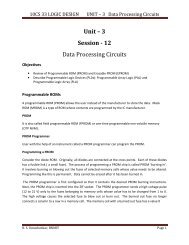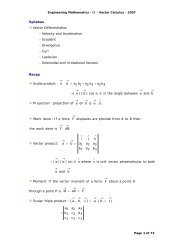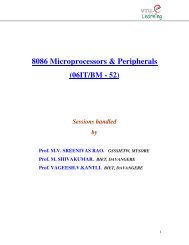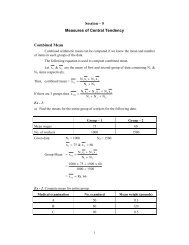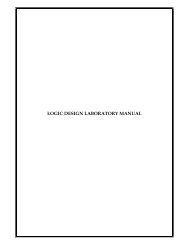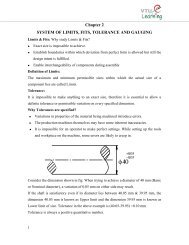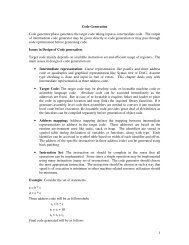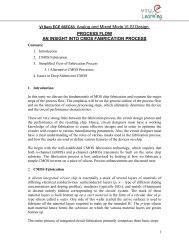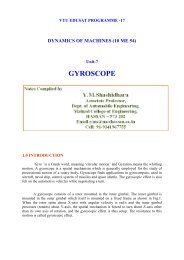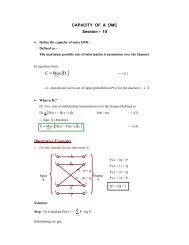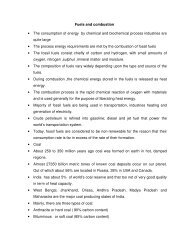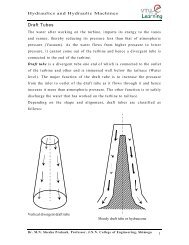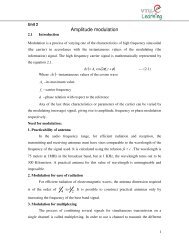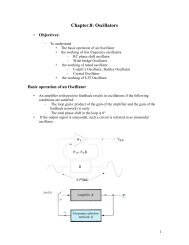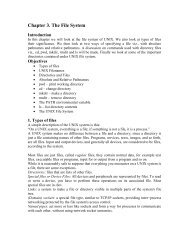Fugacity: It is derived from Latin, expressed as fleetness or escaping ...
Fugacity: It is derived from Latin, expressed as fleetness or escaping ...
Fugacity: It is derived from Latin, expressed as fleetness or escaping ...
You also want an ePaper? Increase the reach of your titles
YUMPU automatically turns print PDFs into web optimized ePapers that Google loves.
<strong>Fugacity</strong> coefficient ( ) : <strong>Fugacity</strong> coefficient ids defined <strong>as</strong> the ratio of fugacity of a<br />
component to its pressure.<br />
f<br />
<br />
P<br />
Is the me<strong>as</strong>ure of non ideal behavi<strong>or</strong> of the g<strong>as</strong>.<br />
Standard State: Pure g<strong>as</strong>es, solids and liquids at temperature of 298k at 1 atmosphere are<br />
said to ex<strong>is</strong>t at standard condition. The property at th<strong>is</strong> condition are known <strong>as</strong> standard<br />
state property and <strong>is</strong> denoted by subscript’o’.<br />
o<br />
G = Standard Gibbs free energy<br />
o<br />
f = Standard fugacity<br />
Estimation of fugacity f<strong>or</strong> g<strong>as</strong>es<br />
I method<br />
dG VdP SdT<br />
F<strong>or</strong> Isothermal conditions<br />
dG VdP<br />
<strong>from</strong> equation (2)<br />
RTd ln f VdP<br />
V<br />
d ln f dP<br />
RT<br />
Integrating the above equation with the limits 0 to f and pressure 1 to P<br />
<br />
d ln f<br />
<br />
P<br />
<br />
1<br />
V<br />
RT<br />
dP<br />
Lower limit <strong>is</strong> taken <strong>as</strong> P =1 atm<br />
At 1 atm <strong>as</strong>suming the g<strong>as</strong>es expected to behave ideally<br />
P<br />
1<br />
ln f VdP<br />
RT 1<br />
if PVT relations are known , we can find fugacity at any temperature and pressure



